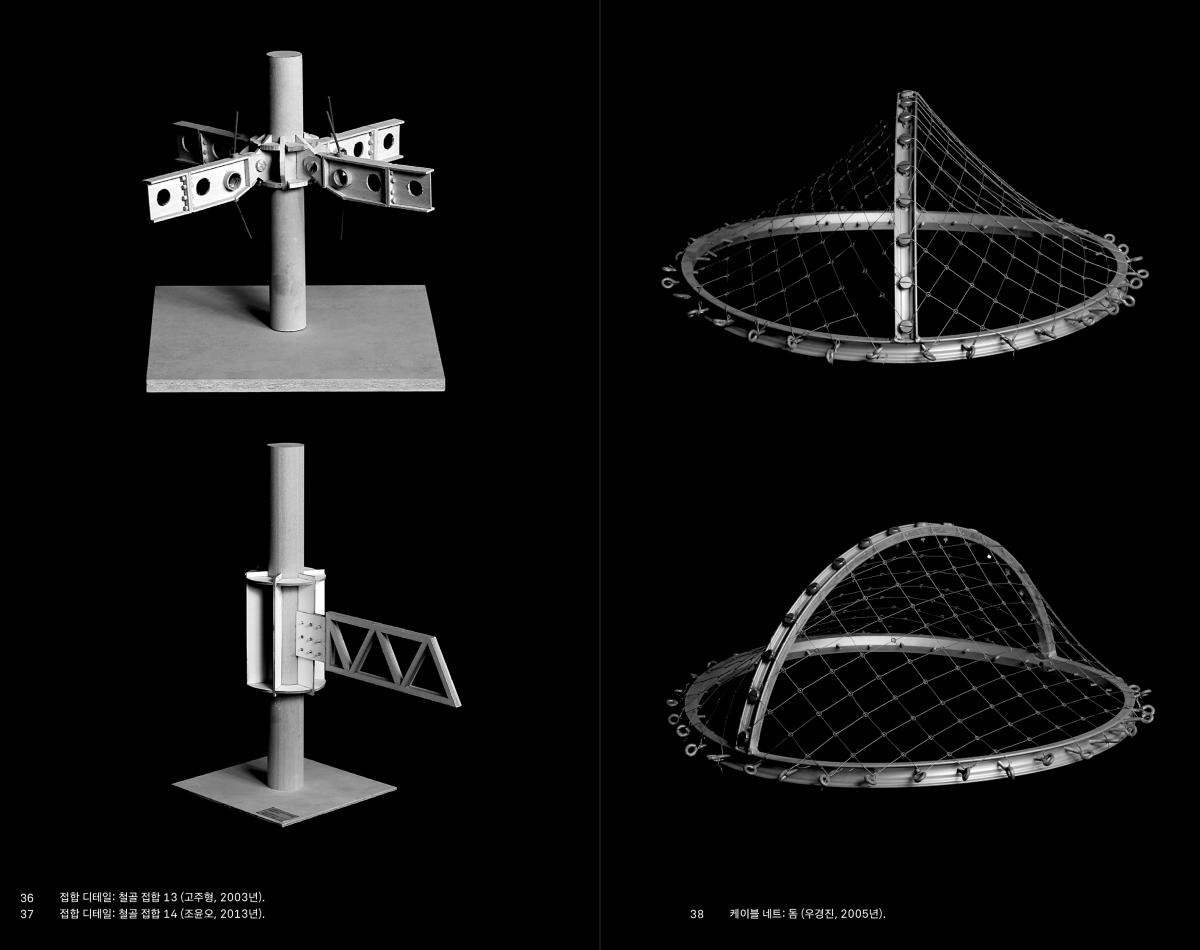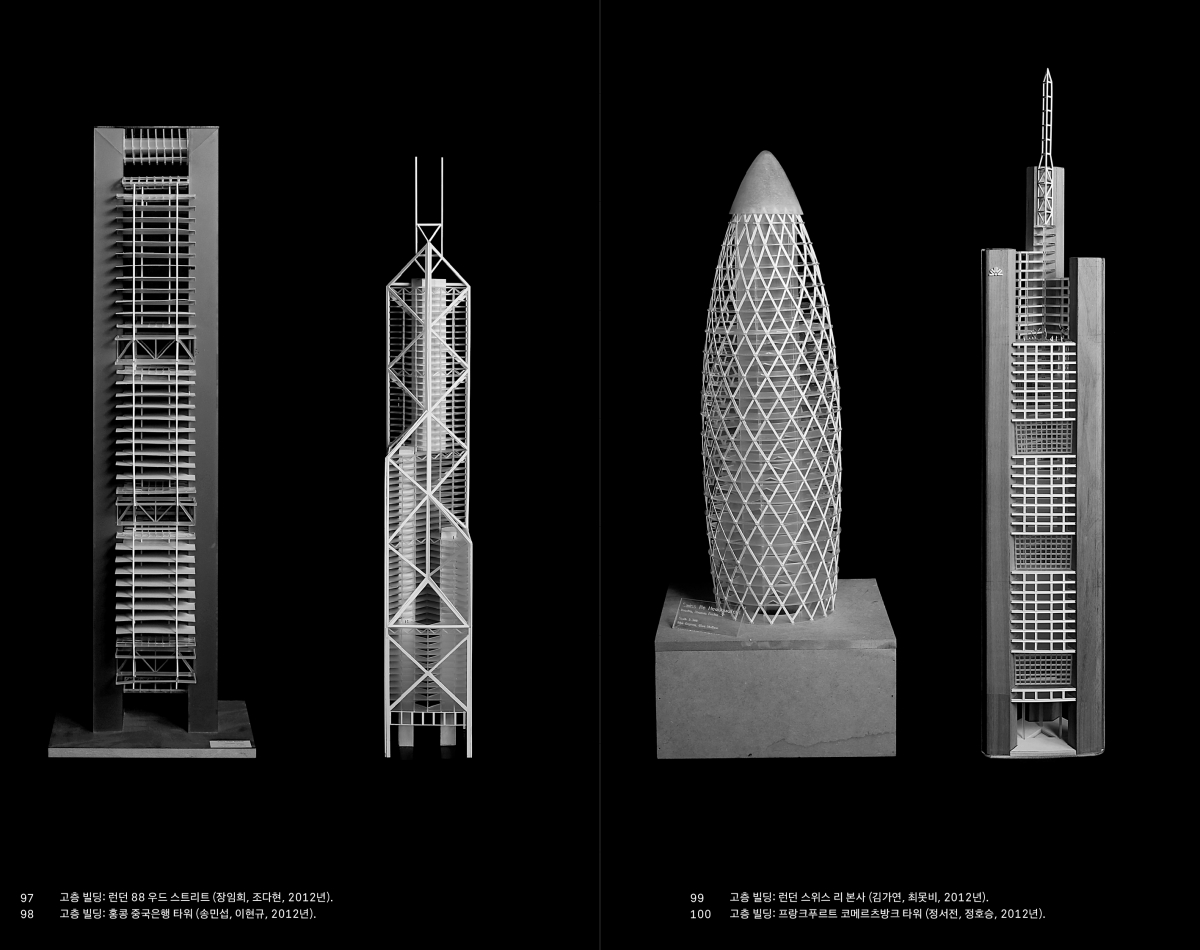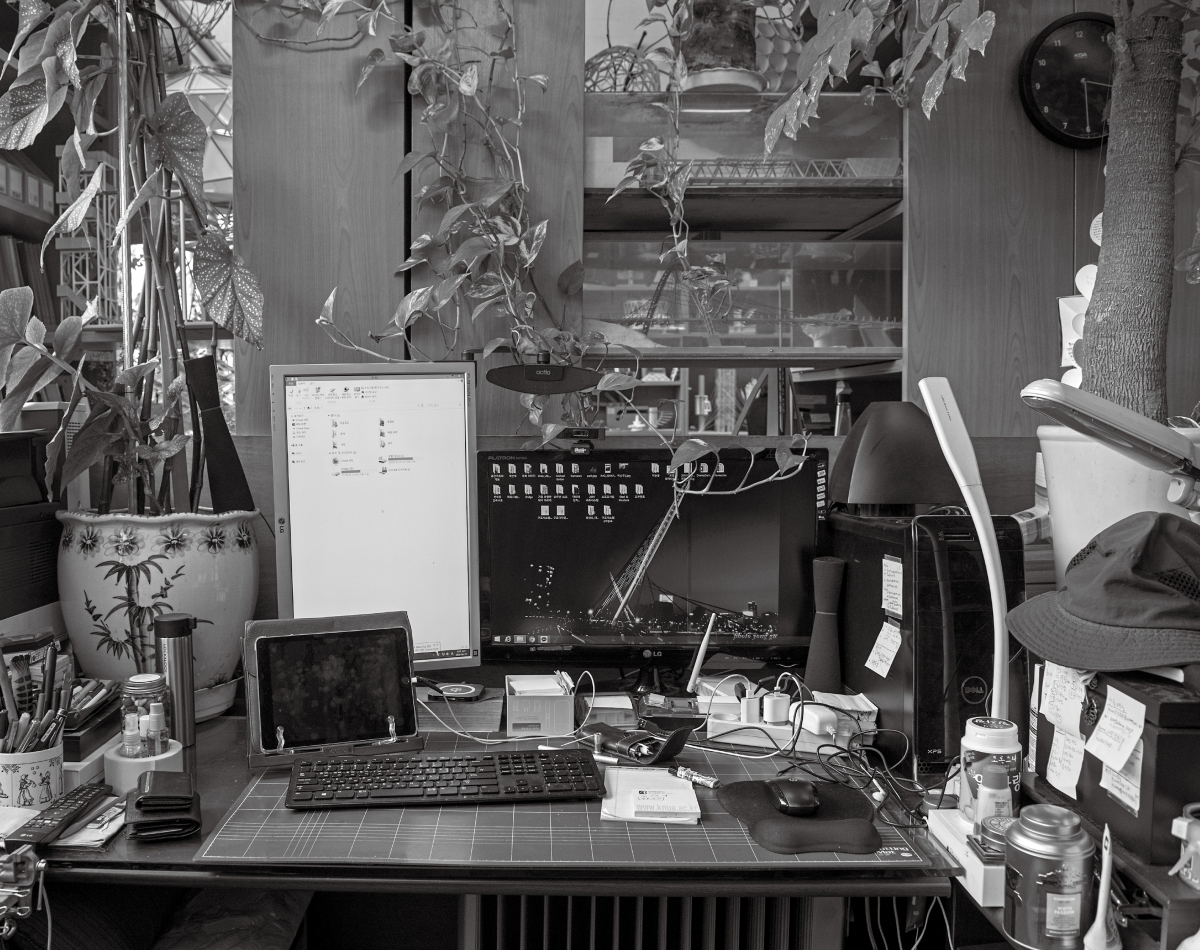A class on architectural structure is typically associated with the image of students tapping away on their scientific calculators. However, this is hard to imagine in the classes of Park Sunwoo. Park teaches his class on structure with models that he pushes, pulls, and beats into shape. Park, who is approaching retirement, has recently published a book on his pedagogical approach. We had an opportunity to reach him for an interview regarding his teaching methods and practices related to architectural structure.

Park Sunwoo (professor, Korea National University of Arts) × Kim Yeram
Kim Yeram (Kim): You have been teaching classes on architectural structure since 1997. You recently published a book that summarises your teaching methods, and I’m curious about your motives behind the publication.
Park Sunwoo (Park): As I’m approaching retirement age, some of my more senior students suggested the idea to me of organising the content that I had drawn upon and referred to over the years into a book. So far, I’ve written books for professionals — books on the structural details of glass buildings and large-scale architectural structures — but my students wanted me to also write a book for those not trained in architectural structure. Their reasoning was that people would not buy the book if its contents were perceived to be too difficult or inaccessible. And so I added lots of images, and after discussing the issues with the editor, I also reworded technical words into words that were simpler and more everyday.
Kim: It was necessary for there to be many more images of models than of text. As you were inserting these images, what did you have in mind to highlight?
Park: Archiving models was one of the main aims of this book, and so I included many images of these models. Printing costs can go up if there are too many images, and if such books are too expensive they might be thought too difficult to purchase by the general public. And so, during the design phase, I fixed a target price for the book and altered the editing and producing methods to match this target price. The result was that almost the entire book was printed in monochrome, but what happened was that when the model images were printed in monochrome, the contrast ratio was more greatly emphasised, and it became easier to observe the relationship of the components and the form of structures.
Kim: With the creation of an accreditation system for architectural education, it seems that there is now greater importance on the quality and quantity of models produced by students. Before that you’ve been dealt with a large number of models. What is the reason behind emphasising model production over the calculation of measurements in your courses?
Park: I think that teaching a model-focused class is possible here because there is a smaller number of students in Korea National University of Arts (K-ARTS) than elsewhere. Even though model production is often practiced in classes, it is fair to say that unfortunately there are almost no structural design courses in Korea that focus on it. There were no structural design classes available back then in 1997 when I returned from Germany after my studies on structural design, and the situation hasn’t changed much since then. Structural design refers to a process of integrating technique and aesthetics, and it is unfortunate that the two aren’t taught in tandem here. Is it because we have such a problem in education that there is a relative lack of knowledge between designers about structure and a lack of sensitivity for design between civil engineers? Models — because you can make and shape them however you want — serve as good teaching tools. Instead of teaching the standards and number of necessary components in buildings, I think it is a much more appropriate teaching method to use models to explain structural problems.
Kim: You used your actual course title as a sub-theme in the table of contents of your book. I’d like to hear more about how K-ARTS’ architecture department instructs its students on structure, and how it is different from the syllabus and approach in other universities.
Park: As the architecture department in K-ARTS comes under the School of Visual Arts, there is more focus on the artistic aspects than on the engineering aspects in their syllabus. This focus is not common in Korean universities, but it is quite easy to find overseas. Is not architecture closer to design than to structural engineering? There are about twenty freshmen in our department, and most of them go into architectural design rather than into structural engineering after graduation. I think this is why there are more classes focused on model making here than elsewhere. The students go through courses on structure throughout their five years: Introduction to Structure (1st year), Mechanics of Structure (2nd year), Structure System (3rd year), Structure Design (4th year), and Technical Studio (3rd year and 5th year). They also take courses on how best to determine the exact amount of force placed on buildings and how to make calculations in the physical counter methods, but the syllabus is overall composed to help them understand structure from the perspective of design.
Kim: You mentioned that the students take two courses on the Technical Studio. I heard that the contents of class are divided into building design and structural design at a deeper level. What are the advantages and disadvantages of this class?
Park: The Technical Studio is advantageous in that it allows the students to become familiar with a holistic design concept as they manipulate various elements such as a structural system, materials, construction costs, and the wider environmental context in their building design. However, because the class is divided into two parts, the students tend to forget what has been taught in their third year, so I have teach it over again. (laugh) I think such a break in the continuity can only be fixed by modifying the entire syllabus.


Image courtesy of Documents Inc.
Kim: Following the Haiti Earthquake in 2010, you taught a class on emergency shelters, and after the controversy surrounding the safety of Lotte World Tower in 2012, you taught a class on skyscraper design. The architectural structure seems to be inseparable from social issues because it is directly related to safety.
Park: People begin to cultivate awareness for structure only when an accident occurs. For example, it was only when the multifamily housing developments developed fissures during the Pohang Earthquake that people became interested in reinforcement work. In those classes, I first explain the structural problems prompted by such disasters, and then I conduct various experiments through which students can propose designs appropriate to such situations. Following the Haiti Earthquake, I experimented by using containers that could be easily shipped around the world as construction materials. With the aim of rapidly improving living conditions of the earthquake victims, I applied a membrane structure that could be folded and opened in the upper area of the containers. In the case of the Lotte World Tower, many people began to develop doubts regarding the safety of skyscrapers due to problems such as cracks and vibrations in the vicinity. And so I showed the students various examples of skyscrapers and explained to them what kind of structures they should prioritise if they were stand strong against wind loads and earthquake loads.
Kim: In many of your structural courses, you present examples of local and foreign architecture and spend time rebuilding them using models. However, if these courses are not to end up as sessions in which students merely copy originals, what must be done?
Park: I rely on examples in my classes when the students are not familiar enough with the original structures. This is because students learn much quicker if I show them buildings of interesting forms and explain how they have been built. In such structural classes, my aim is to provide them with a detailed explanation of how buildings, bridges, and so on are constructed, so that they can communicate better with technicians and civil engineers in the future. Since it would be impossible to fully analyse any building within a semester, my personal aim is that the students understand the structure and construction methods used in the exemplar building and develop the ability to discuss such matters with professionals.
Kim: You will be retiring at the end of this year. What are your future plans after retirement?
Park: I’m currently a column writer for the periodical of the Korean Society of Steel Construction, and I’d like to collect the essays I’ve written for this publication that don’t overlap with this book and edit them as another publication of writings. While I’m not entirely sure whether I’ll ever get to do it, I also have the wish of nurturing the next generation of professional educators on structural design. My concern is that there might not be anyone that is equipped to continue this model-focused approach in courses on structure after my retirement.





